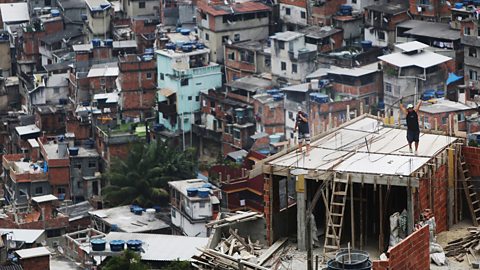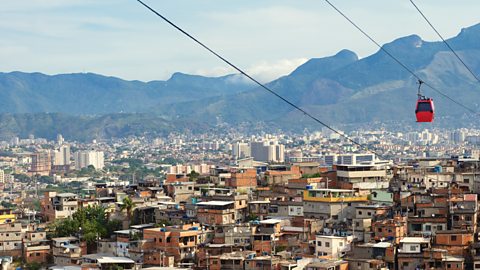Closing the development gap – Improving life in favelas
A nunber of different approaches have been used to improve life for people living in favelas.
Self-help schemes

Local residents are provided with building materials like concrete blocks and cement in order to replace home-made shelters with permanent dwellings. These are often three or four storeys high, and with water, electricity and sewage systems installed. This reduces the number of dangerous buildings and helps prevent the spread of disease.
Legal changes
Favelas were previously treated as illegal settlements, and residents could be evicted and their homes destroyed.
Now favela residents have a legal right to own their own properties. Low rents have also been offered.
Linking the favelas to the rest of the city

Transport systems have been extended to include the favelas to give residents the opportunity to travel to work in the city centre and industrial areas.
For example, the Teleferico do Alemao cable car system was set up to enable residents to get from one end of the Complexo do Alemao favela to the other in just sixteen minutes. To walk it would take two hours, and each local person gets a free return ticket every day.
The system also connects to Rio's railway network, enabling the people of Complexo do Alemao to get quickly into the city centre, opening up the opportunity of better paid work than is locally available.
However the cable car service ended in 2016 when state funding was stopped.
Law and order
Law and order has been improved in the favelas by trying to rid these areas of crime and drug abuse. Several large favelas have been improved in this way through federal 'Pacification Programmes'.
Alternative housing
New towns like Barra da Tijuca, built 20 kilometres along the coastline, have been built to relocate some residents from city favelas.